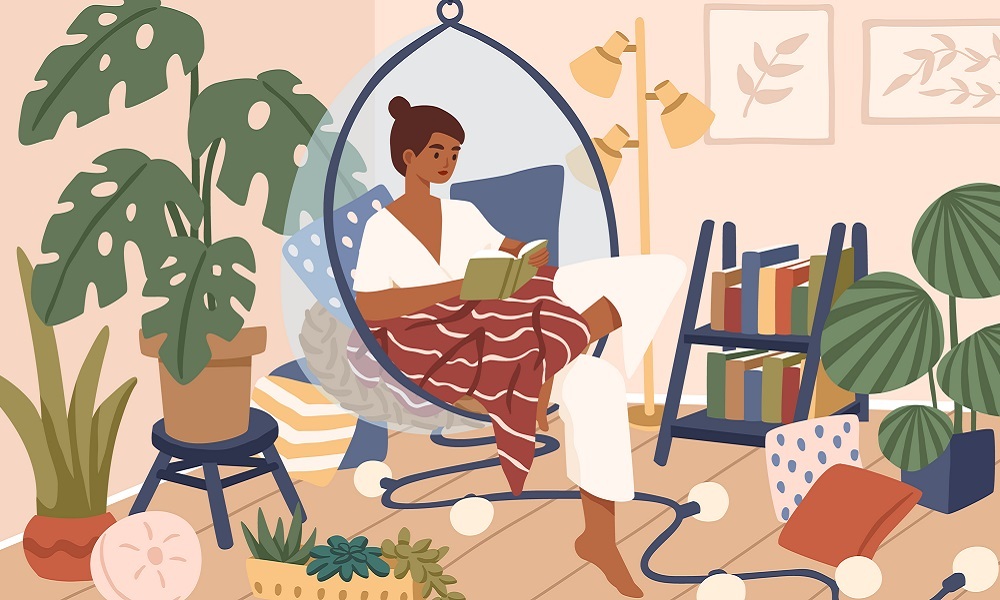We often hear about why it’s important that children read for pleasure, but we don’t seem to place that same importance on adults’ reading habits. So, is it important that adults read for enjoyment? And if so, how many adults actually read for pleasure on a regular basis?
Reading for pleasure is defined as reading that we do of our own free will, anticipating the satisfaction that we will get from the act of reading. It typically involves materials or texts that reflect our own choice, at a time and place that suits us (Clark & Rumbold, 2006).
Children and teenagers are often encouraged to find a love of reading or to find texts that they enjoy consuming. But adults aren’t usually afforded the same level of encouragement. So, is it important that adults engage in reading for enjoyment?
A study published in 2017 by the Australia Council for the Arts and Macquarie University found that 51 per cent of the 3000 participants in the sample were considered occasional readers (those who have read between one and 10 books in the last 12 months) and 41 per cent were considered frequent readers (more than 10 books).
‘Australians read regularly and a lot of people read as many as 10 books in a year. With people living such busy lives, that really surprised me,’ Dr Judith Seaboyer, a Senior Lecturer in Literary Studies at the University of Queensland, tells Wellbeing by Teacher.
The survey also shows that, on average, Australians spend about seven hours reading each week (including books, the internet and other media), of which about 70 per cent is reading for pleasure.
Participants in the survey were also asked about the types of books they enjoy reading. Among fiction books, almost half of respondents indicated crime, mystery or thrillers as a category they enjoyed reading, while the most frequently nominated non-fiction genre was autobiography, biography or memoirs.
‘Research shows that Australians’ most preferred texts are mysteries and thrillers,’ Seaboyer says. ‘There’s nothing wrong with that, except that you don’t need to be particularly engaged to read these types of texts.’
She says that Australian adults have become part of a speed-reading culture, which means fewer people are reading deeply and thoughtfully.
‘How many of us read a novel to see how the plot sorts itself out and get to the end, and then put it back on the shelf or take it back to the library? The kinds of novels we mostly read for pleasure nowadays are escapist.’
The skill of deep reading
Seaboyer says that unless the cognitive skills required for deep reading are developed and nurtured, new generations of readers may not learn to venture beyond the shallows of the reading experience.
‘When you immerse yourself in a book, the neuroscience tells us that what happens in the brain is a little bit like that happens when you meditate. It actually helps us to relax and to think and to move into some kind of other space. It’s not an escapist space, but it’s an enriching space.’
Seaboyer adds that adult readers can be easily distracted by the availability of digital information, consuming media in short grabs as they click from page to page. Deep reading, in contrast, is a learned skill that requires the development of particular neural networks.
‘What deep reading does for us is it helps us to keep those neural pathways working well and it helps us to keep learning more about the world. It keeps us open-minded, it makes us hospitable to other ideas and so on,’ Seaboyer says.
‘The more that we deep read, the more practise they do, the better we become at that kind of reading. But if we stop doing it and we stop maintaining those pathways, if we as adults cease to practise that long-form, immersive, engaged reading – we lose that skill.’
How to embed reading into your daily routine
If you’re a person that struggles to read long-form texts, it can be difficult to know how to begin embedding reading for enjoyment into your routine. Seaboyer says that while it is difficult, there are simple steps you can take to get started.
‘I think you need to think of it as something that you do in your life that is important to make time for. So for somebody with three kids and a full-time job, that’s perhaps going to be at the weekend. Just set the time aside,’ she says.
Seaboyer also recommends thinking of reading as a kind of hospitality. ‘Think to yourself, I’m the host and my book is my guest and I’m trying to understand that text, I’m trying to open myself up to that text and be prepared to hear what it has to say to me.’
By approaching the text in this way, she explains, you’ll be encouraged to engage in deep reading and to consider the text beyond the conceptual structures of the plot. ‘Any act of reading that goes beyond the conceptual structures can be seen as an opportunity to understand others, to open your trust to that and to accept the text for what it is.’
References
Clark, C., & Rumbold, K. (2006). Reading for Pleasure: A Research Overview. National Literacy Trust.
Throsby, D., Zwar, J., & Morgan, C. (2017). Australian book readers: Survey method and results. Macquarie Economics Research Paper, 1, 2017.
How do you care for your own health and wellbeing? Do you have a story you’d like to share with Wellbeing by Teacher? Here’s a handy guide on how to get started.


